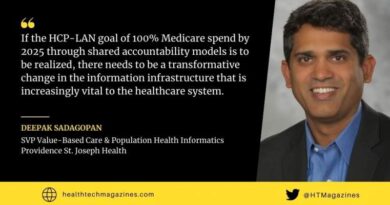Evolution of the Radio Doctor
By David Smith, Associate VP of Virtual Medicine, Information Services, UMass Memorial Health
The traditional house call, known by generations of patients and doctors alike, is making a comeback through telemedicine.
With the advent of radio in the early 20th Century, people envisioned how advances in communication and technology could be applied to the practice of medicine. By the 1950s, the term “telemedicine” was referenced in medical literature to describe transmitting radiographic images over the telephone and using two-way television for neurological exams. As America’s space program intensified throughout the 60s and 70s, the need to monitor an astronaut’s vital signs during flight led to satellite-based telemetry systems that further advanced our understanding of tele-, or distant, medicine. While adoption slowed in the 80s and 90s due in part to the high cost of transmission rates, certain programs thrived because of their ability to reach underserved, rural populations. Today it is quickly evolving as a mainstream component of the care continuum.
We now face unprecedented competition in a rapidly changing healthcare marketplace. Telehealth is creating disruptive innovation, compelling healthcare systems to adopt new delivery models to assure long-term sustainability. The shift from fee-for-service toward value-based payment models is increasing the demand for timely access, higher quality care, improved patient satisfaction, and the importance of coordinated and integrated health services across the continuum of care. Digital medicine presents us with the opportunity to serve our patients in the most appropriate setting, which may be their own home. A well-integrated home health strategy supports population health, exploring root causes of poor health, better serving vulnerable populations, and more actively managing chronic conditions. Such programs help to promote quality of life while at the same time lowering the overall cost of care.
Technology that enhances patient engagement is central to developing a robust population health strategy.
Population health initiatives often incorporate a variety of systems, devices, and services that work together to extend patient care in hospitals, specialty clinics, private physician offices, skilled nursing facilities (SNF), home health agencies – and increasingly – directly to our patients. In addition to a generational shift away from traditional care settings, advances in video-enabled mobile technology and smart devices are driving adoption among consumers who want convenience, access, value, and choice. These factors and more are enabling comprehensive care models for chronic disease management that are driving medical devices and remote monitoring into our patients’ everyday lives.
Remote monitoring serves as the cornerstone for many population health programs, and is increasingly prevalent in wearable technologies. Expanding the use of integrated home health devices for chronic disease management not only provides a more insightful view for the care provider but also serves as a potential data mine for population health management and research. It allows for corrective actions in-between regular office visits to assist with managing chronic illnesses such as CHF or diabetes. Likewise, providing patients with virtual access to medical expertise through digital technologies can reduce overcrowded emergency rooms, long wait times, and lapses in care.
Technology that enhances patient engagement is central to developing a robust population health strategy. The explosion of digital health solutions is evidence of the shift in traditional care delivery models toward one that is more consumer-driven and patient-centric. The use of smartphones, wearables, connected monitoring devices, and other readily available technologies expands our outreach to areas that were previously inaccessible to our caregivers. Many of the services that only a few years ago mandated an office visit are now being offered in more accessible and convenient ways through home-based diagnosis and treatment options. There will always be a demand for hospital beds. But direct-to-consumer models are gaining fast acceptance, particularly among the ever-growing population of “connected” Millennials.
Yet it’s not so much about tech and wires as it is about building relationships between patients and their care providers. While synchronous video has been in use for decades in telemedicine, a new wave of technology has emerged in the form of apps, wearables, and smart home medical devices. Now more than ever, our ability to connect with patients is literally in the palm of our hands. The healthcare industry is flooded with tools and technologies that facilitate ease of access, convenience, choice, and remote monitoring capabilities. Still, technology itself does not constitute a population health strategy. It is an instrument used to gather data through two-way audio/video conversations, image capture, electronic diagnoses, vital signs, and much more. In order to be effective, that data must become actionable information for the care team because the most relevant information combined with the right action at the right time almost certainly leads to better care.
The goal of coordinated care and population health management is to ensure that patients, particularly the chronically ill, get the right treatment at the right time while avoiding unnecessary duplication of services. In this regard, population health can be very successful in managing so-called “penalty conditions” linked to higher readmission rates. Avoiding readmission penalties is a cost-prevention strategy. As is side-stepping the ED from more proactive care. The value proposition is no longer encounter driven…it is the result of savings across the entire course of treatment. But to do so requires a combination of people, processes and technology to bridge gaps in the continuum of care. That is not accomplished with technology alone. It takes programmatic change and people working with a common purpose. An army of health coaches to improve population health through active and engaged home health monitoring and individualized care management.
For perhaps the first time in modern healthcare, we are witnessing a paradigm shift that will alter the traditional patient-provider relationship forever. Yet, in one sense, it may just be coming full circle…back to the potential of the “radio doctor” as predicted nearly 100 years ago.



